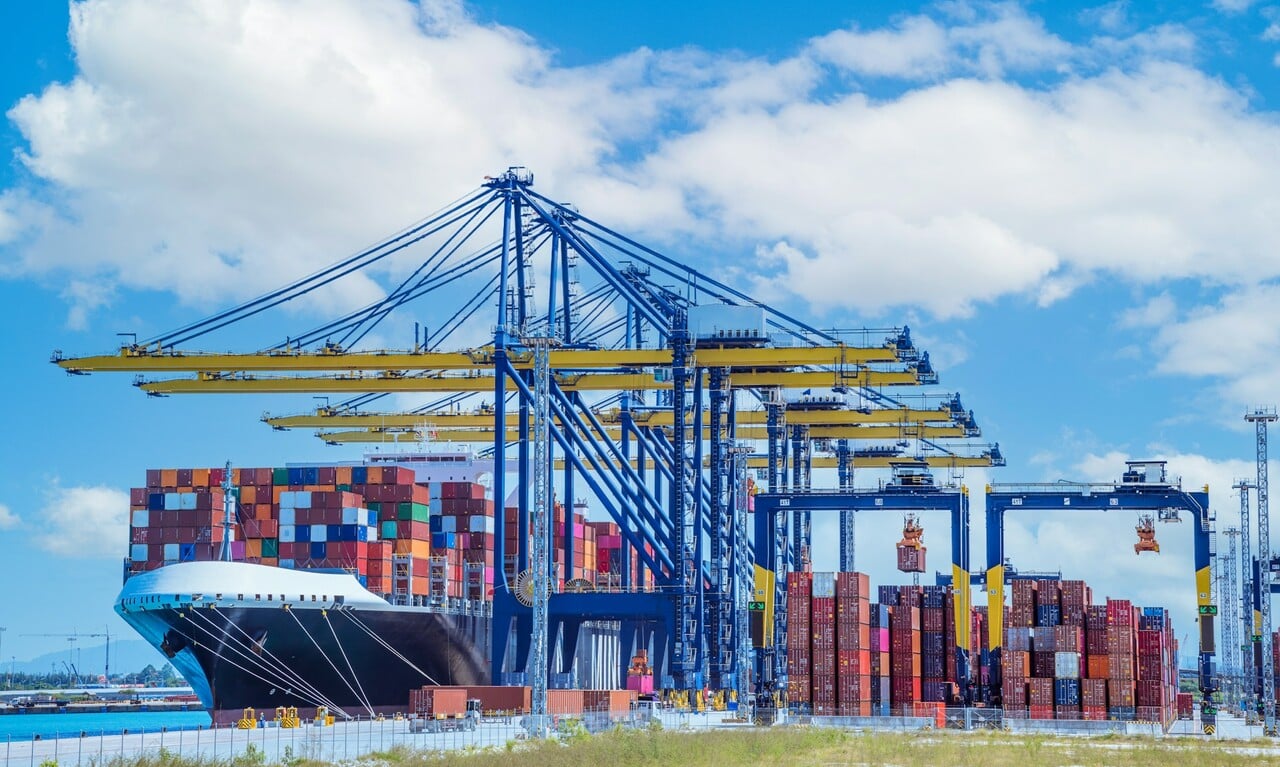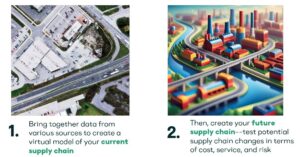Blog
Geopolitical Disruptions: Preparing Your Supply Chain for Global Uncertainty
PUBLISHED ON:
November 14, 2024

Subscribe to Receive the Latest Supply Chain Design Resources
Geopolitical disruptions are inevitable, driven by factors such as technological advances, shifting political landscapes, and unexpected global events. For supply chain executives, understanding the potential impact of these disruptions and preparing your supply chain can mean the difference between staying competitive or falling behind.
Understanding the Geopolitical Impact on Supply Chains
Global supply chains are under tremendous pressure from a variety of geopolitical forces. Disruptions in technology, politics, and logistics are reshaping how organizations source materials, manage risks, and deliver products. Here are some of the main triggers:
- Technological advancements: The rise of AI, the push for electric vehicles, and social media’s influence on consumer behavior are forcing supply chains to adapt rapidly. This involves finding alternative power sources, revisiting transportation modes to minimize environmental impact, and staying ahead of tech trends.
- Political dynamics: The ongoing tension between nationalism and globalization presents complex challenges. Political shifts due to elections can lead to new tariffs, altered trade agreements, and a need for companies to pivot quickly to maintain competitive advantages.
- Logistics disruptions: Conflicts like those in the Middle East and Ukraine disrupt key shipping pathways, leading to increased costs and delays. This impacts the availability and pricing of essential raw materials, particularly in industries like semiconductors.
Executives often face challenges in responding to geopolitical disruptions, including:
- Managing multiple disruptions: Rapid response is critical to overcome hurdles. Executives must quickly analyze situations to determine the best course of action.
- Lack of proactive contingency planning: While some disruptions are foreseeable, anticipating them requires a proactive approach. For instance, foreseeing port congestion and having contingency plans can mitigate negative impacts.
- Slow decision-making: Leaders need analytics capabilities to enable swift decision-making throughout the organization. This adaptability is key to thriving amid change.
- Difficulty and time required to move supply chain strategies to execution: 85% of executives said they are unable to implement new supply chain strategies within three months, while 63% say it can take years.
Supply Chain Design Enables Executives to Proactively Manage Disruption
To grow your business efficiently amid internal and external disruptions, supply chain executives must have a plan for how their supply chain will flex and adapt.
Supply chain design is the process of creating a digital model of your current supply chain, then testing future changes in terms of service, financials, and risk.
Supply chain design can explore every type of decision (site location decisions all the way to SKU-level order detail) regarding the structure and policies of your supply chain, such as:
- What SKUs should be stocked and where?
- What inventory planning approaches best trade-off capital and service?
- What fulfillment rules should we use?
- What modes of transportation should we use and on what lanes?
- What is the effect of changing our physical distribution approach?
- What will happen if we move our supply base?
- What might happen if we don’t move our supply base?
And so on, and so on. Design the future supply chain you’ll need—and go make it happen.
3 Steps Supply Chain Executives Can Take to Prepare for Geopolitical Disruption
1. Develop a Deep Understanding of the Behavior of Your Supply Chain
Executives must thoroughly understand their supply chains to anticipate and respond to disruptions. This involves comprehending key trade-offs and identifying potential breaking points. Key considerations include:
- Understanding critical dependencies on specific suppliers or ports
- Analyzing the impact of potential disruptions on operations
- Developing contingency plans for various scenarios
Understanding your logistics’ reliance on specific ports helps you anticipate disruptions and devise alternative strategies. A digital supply chain model enables “what-if” scenario modeling, offering valuable insights into your supply chain dynamics and responses to geopolitical changes.
2. Elevate Organizational Maturity in Supply Chain Design
A mature supply chain design capability accelerates an organization’s response to geopolitical shifts. This requires:
- Team Development: Ensuring your team has the necessary skills and knowledge.
- Key Processes: Establishing robust processes for supply chain design and adaptation.
- Supporting Technology: Implementing the right tools to support decision-making.
- Strategic Alignment: Aligning strategies across the organization to ensure cohesive responses.
By fostering maturity, organizations can reduce the time from strategy to execution, enabling faster adaptation to change.
Related: 7 Expert Tips for Building a Sustainable Supply Chain Design Organization
3. Improve Speed of Decision-Making
Supply chain design capability must extend beyond core teams to the broader organization. Implementing user-friendly applications with powerful analytical capabilities allows all employees to make informed decisions quickly. This approach promotes cross-functional collaboration and creates a shared understanding of supply chain objectives.
- Streamlined access to real-time data
- Enhanced scenario analysis for better forecasting
- Improved communication across departments
You can provide stakeholders with the means to analyze real-time data and explore scenarios for precise, informed responses to geopolitical disruptions.


